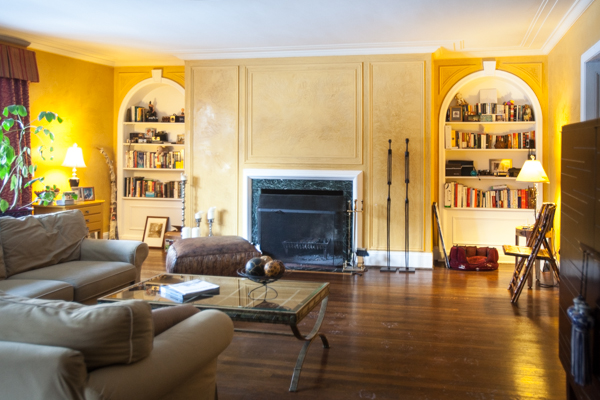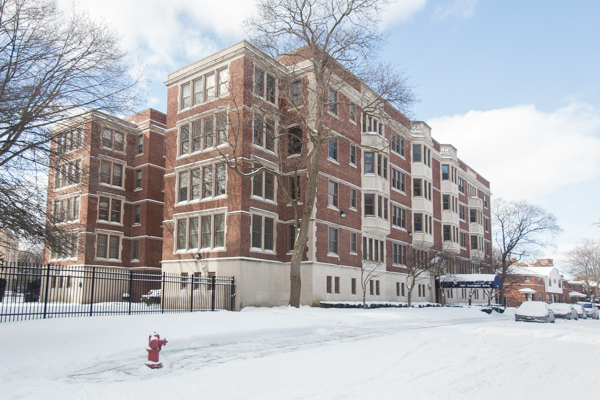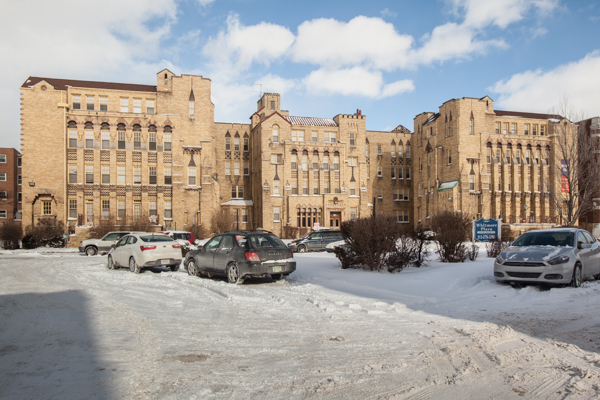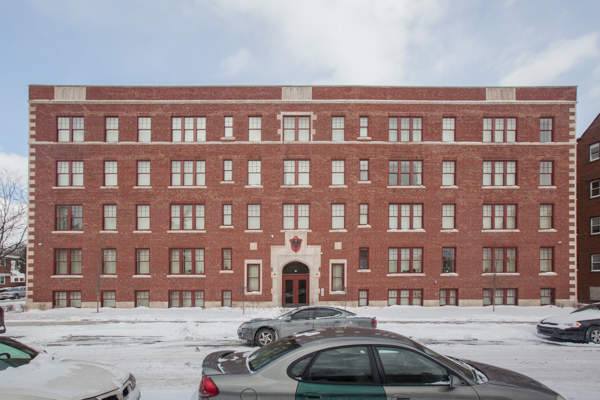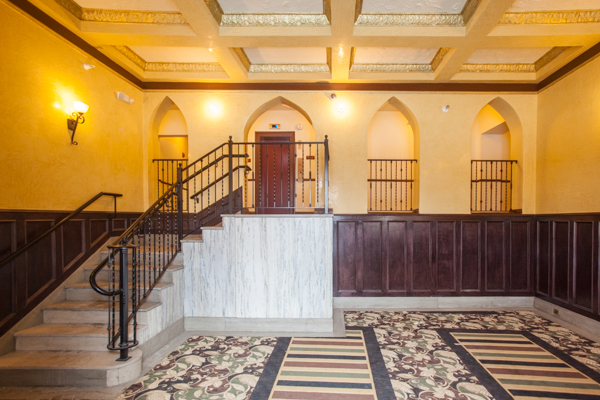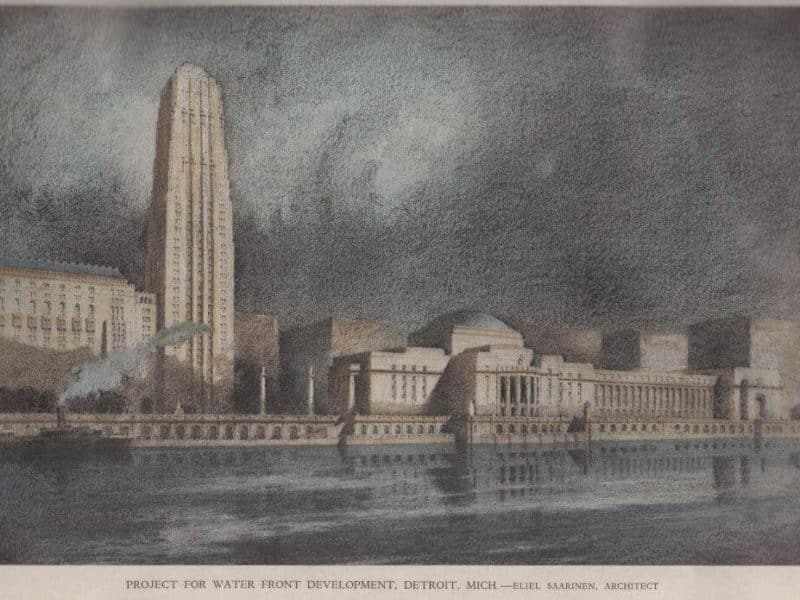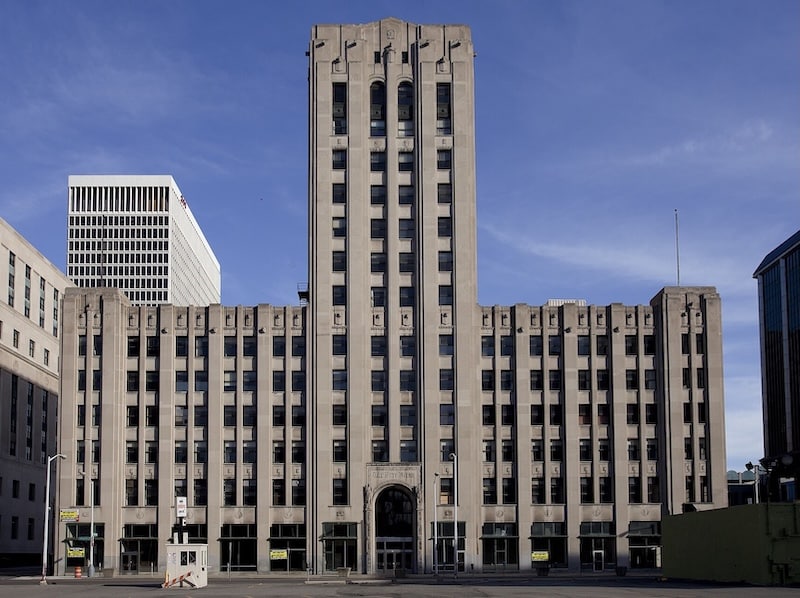Palmer Park’s turnaround and neighborhood revival
Great things are happening in Palmer Park, the historic, 296-acre greenspace and adjacent apartment district, which features a jaw-dropping collection of buildings built between 1925 and 1965. Matthew Piper surveys the past, present and future plans for the neighborhood.
1: A brief history of an exquisite neighborhood
In the 1870s, lumber baron and U.S. Senator Thomas Palmer inherited 160 acres of land from his mother in the area we know today as Palmer Park. (For a longer history that includes the pre-Palmer days, check out this delightful Souvenir and Illustrated History of Palmer Park from 1908.) After continuing to acquire neighboring parcels over the next decade, Palmer eventually came to own around 800 acres in what was then known as Greenfield Township.
Senator Palmer used much of the land as a horse and cattle farm, while his wife Lizzie employed noted landscape architects Frederick Law Olmsted and Charles Eliot to design a resplendent park that included two lakes, islands, and miles of winding paths.
In the 1890s, the conservation-minded Palmer deeded the park land to the City of Detroit, on the condition that the virgin forest on site be preserved. Subsequent years found the remainder of Palmer’s vast land holdings around the park and forest turned into a golf course, the august Palmer Woods neighborhood (north of the park), and the Palmer Park apartment district (immediately south).
The first apartment building to be built in the apartment district was the Albert Kahn-designed Walbri Court in 1925. What followed were 40 dizzying years of glamorous, upscale apartment construction, resulting in dozens of buildings variously designed in the Egyptian, Spanish, Mediterranean, Venetian, Tudor, Moorish Revival, Georgian, Art Moderne, and Modern styles.
This exquisite neighborhood — bordered by Woodward to the east, the park itself on its northern edge, Pontchartrain Blvd to the west and McNichols to the south — was home to much of Detroit’s Jewish community from the 1920s until the late ’70s, when Temple Israel moved from Palmer Park to West Bloomfield.
In the meantime, it had also become the locus of Detroit’s gay community. From the ’50s until the ’80s, the apartment district was Detroit’s “gayborhood,” where large numbers of gay men lived in close proximity and walked to nearby, gay-owned restaurants, bars, and stores.
Gregory Piazza lived in the district from 1974 to 1991 and remembers it as “the most exciting place I’ve ever lived.” Piazza, who is responsible for the district’s national historic designation, recalls that the gay population stabilized the neighborhood in the wake of the Jewish migration to the suburbs; but gays, too, were soon leaving in droves, heading north to Ferndale and Royal Oak in the wake of a long crime wave that, they felt, the police were not taking seriously.
From the ’80s to the first decade of the 21st century, Palmer Park earned and maintained a reputation for seediness. The apartment district destabilized as the money moved north, the buildings began to empty out and decay, and the park became known as a hotbed of drug activity and prostitution. Rochelle Lento, who moved to Palmer Woods in 1991, quickly realized that the historic park she was so excited to live nearby was no place to take her children.
As recently as 2007, Clinton Griffin, who moved back home to Detroit from abroad to take care of his grandparents and raise his young great nephew, decided there was “no way” he would be taking his child to the park to play, even though he moved into a building that overlooked it.
2007, though, is also the year that the district and the park’s twinned revitalization really got started — that’s when husband and wife developer team Mark Leipsitz and Kathy Makino-Leipsitz fell in love with the apartment district and started dreaming.
2. Revitalizing a district like no other
Between 2007 and 2012, Kathy and Mark’s Shelborne Development purchased a total of 14 apartment buildings in Palmer Park, with the intent to breathe new life into the neighborhood and restore its historic grandeur through redevelopment. Of the 14, six were completely vacant at the time of purchase and eight had very low occupancy.
When I ask her why she and her husband have invested so much in the Palmer Park apartment district, Makino-Leipsitz replies, “How can you not fall in love with that area? Each building’s a work of art. That district is one of the few in the nation, if not the only one, where you can see so many distinct styles of apartment buildings in one place.”
Renovation work is complete in seven of Shelborne’s Palmer Park buildings; of those, four have people living in them, one has people moving in, and two will be ready for move-in in early February.
Kathy and Mark financed the purchase and redevelopment of the buildings — and weathered the recession — through a complex assortment of financial tools, including historic tax credits, federal stimulus funding, and low-income/affordable housing tax credits. As a result of the latter, 80 percent of the renovated apartments will be designated affordable housing, giving low-income Detroiters the opportunity to live in updated apartments inside beautiful, well-preserved historic shells.
Shelborne’s efforts have earned high marks from industry peers. Palmer Park Square, a collection of six redeveloped buildings in the district, was recognized as the “Novogradac Journal of Tax Credit 2013 Historic Development that Best Demonstrates Financial Innovation,” just one of the three awards the development garnered in late 2013/early 2014. Perhaps more importantly, the redevelopment is also impressing the neighbors, current and former.
“These buildings were all so elegantly planned, and positioned just right,” Gregory Piazza says. “Each building is hands off to the next one. The way development needs to be done here is the way the Makinos are doing it. They’re being very careful, not just slapping in any kind of window, for instance, but honoring the design and history.”
“It’s so wonderful that it’s happening,” Rochelle Lento concurs. “What’s good for the apartment district is good for the park, and vice versa. As more people move into the apartments, there will be more people using the park. And making the park safer will, of course, make the apartments more attractive.”
3. Power to the people
Lento and Griffin are both on the board of People for Palmer Park, the citizen-driven nonprofit organization that assumed operational control of the park in 2011, in the wake of its threatened closure.
At the time, the city’s General Services Department staff had been drastically reduced, prompting it to announce the closure of 77 city parks. Led by Palmer Park’s tennis players, a diverse group banded together to protest the closure, eventually forming People for Palmer Park, an organization dedicated to the park’s rejuvenation and sustained vitality.
Their efforts in recent years have been remarkable, including clearing miles of trails, pruning trees to enhance visibility through the park, opening Thomas and Lizzie Palmer’s log cabin to visitors for the first time in decades, planting apple trees, managing a large-scale composting effort, and, in August 2013, installing a brand-new splash park for kids. (1,200 people attended the grand opening.) People for Palmer Park has hosted harvest festivals, tennis lessons for both kids and adults, yoga and t’ai chi classes, and once-a-week bike rides through the park. They’re getting ready for WinterFest this coming Sunday, which will include a doggie fashion parade (that’s right), as well as skiing, snow-shoeing, ice skating, and horse and carriage rides.
And they honor the neighboring apartment district with an annual fall walking tour that gets more and more popular every year (200 people attended in 2011, 400 in 2012, and 600 in 2013).
Together, the ongoing revitalization of the park and rehabilitation of the apartment buildings are utterly transforming Palmer Park, turning it into a vibrant center of community activity and local pride where one constructive effort uplifts another.
“One of the things we just decided we’re going to do,” Kathy Makino-Leipsitz tells me, “is to buy everyone who moves into one of our buildings membership in People for Palmer Park. What they’re doing is such a complement to what we’re doing, and the more we can do to get the residents involved in the whole community, the better off we’re all going to be.”
People for Palmer Park’s third annual WinterFest takes place this Sunday 1-4 p.m. in the park. Artists, note that you can apply now to have your work exhibited in the Palmer Park Art Fair, which takes place in early May.
Matthew Piper is the author of Green City Diaries, a co-production of Model D and the Green Garage Urban Sustainability Library. This story is part of Issue Media Group’s placemaking series, underwritten by the Michigan State Housing and Development Agency. Natalie Burg is project editor for the series.
Photos by Marvin Shaouni
